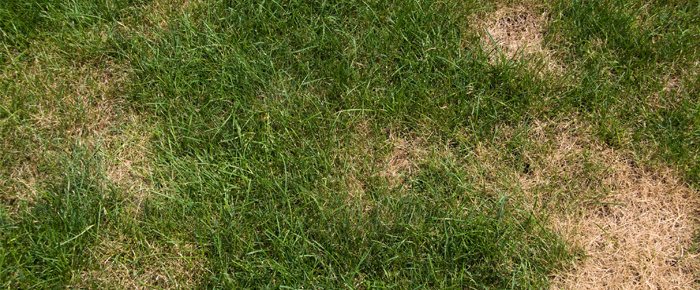Grub Worms – Your St. Louis Landscaping Expert Tips to Get Rid of Them
Time to inspect your lawn for grub worms. Left untreated, they can do serious damage to your turf. Inspect under the sod for small white worms which will feed on the roots and kill your grass.
White lawn grubs are the larvae of various beetles, including the Japanese beetle and the green June beetle. They are plump and C-shaped. White grubs also have brown heads and three pairs of legs. Such grubs do damage to lawns by feeding on grass roots, which causes the grass to wilt and die. Determine whether your lawn is suffering from grub infestation as opposed to another issue before using chemicals or other means of control.
Observe your lawn. If the turf is wilting and features irregular brown patches, it is possible that you have grubs. While lawns can wilt and brown for other reasons, such as extremely dry, hot weather, a wilted, browning lawn can certainly indicate grub activity. Also look for spots that appear to have been dug up, because assorted animals might be digging through your lawn to get to the grubs.
and brown for other reasons, such as extremely dry, hot weather, a wilted, browning lawn can certainly indicate grub activity. Also look for spots that appear to have been dug up, because assorted animals might be digging through your lawn to get to the grubs.
Pull up with your hands a section of the lawn where you think you might find grubs. Use a trowel or spade if necessary to remove a decent chunk of lawn from the ground, and wear gloves to avoid potentially touching the grubs with bare skin. Look at the ground where you have pulled up the sod to see whether there are any white grubs in C-shaped positions. The browning of a lawn from larvae damage typically occurs when there are at least 10 grubs per square foot of sod.
Continue pulling up chunks of lawn by hand until you have uncovered every area of your lawn you believe is contaminated with grubs. A thorough inspection helps you determine what control methods you should employ.
St. Louis Landscaper Tip:
Allow the lawn to remain dormant to dry out and kill the grubs, which require moist soil to reproduce and thrive. This results in an overall brown lawn, but the grub issue should resolve itself. If you live in an area that receives heavy rainfall year-round or during the summer, this may not be the best option for grub removal.
Any sign of grub worm activity should be dealt with immediately. There are many do it yourself products on the market, such as the insecticides halofenozide and imidacloprid, however we strongly recommend treatment by a professional lawn care company, as they must be used as pretreatment before lawn damage is evident to be effective.
More tips from your St. Louis Landscaping Experts at Environmental Landscaping:
Continue to provide food & water for the birds. Hummingbirds should be back now., so keep them happy with a simple sugar solution (1 part dissolved sugar to 4 parts water). Change the solution frequently if the hummingbirds aren’t draining the feeder however, especially if it’s in direct sun. The solution can spoil & become toxic to these amazing little creatures.
Now is the time you can sow warm season vegetables & herbs too, for delicious meals later this year!








